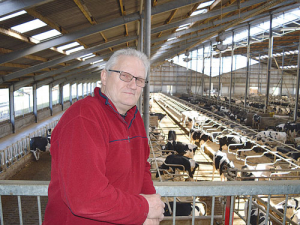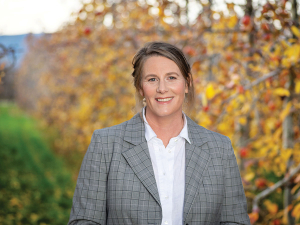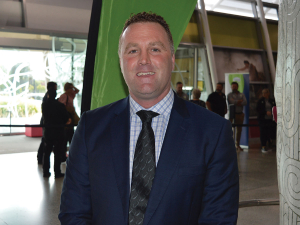The Lansink family – Gerhard and Yvonne and their son Guus -- built their barn on their Wartenburg farm, south west of Berlin, in 2014. Unfortunately, a dramatic drop in milk prices followed as Germany banned dairy sales to Russia when it was implicated in the destruction of a passenger plane.
The Lansinks run three branches – dairy, farming operation and biogas production – to spread their risks.
“In the dairy sector, we hope the cash crop will help us out. Two years ago milk prices and crop prices were bad,” Guus said.
The family employs 25 full-time workers.
Recent changes to biogas production have made it less attractive for farmers or other businesses, but they have a contract until 2032 with their current system. And they get government subsidies for their cropping land.
The Lansink family moved to east Germany from Ontario, Canada in 2006, starting with 300 milking cows on 1500ha – 1000ha tillable and 500ha grassland with good loam soil.
They farm 215ha of winter wheat, 170ha of canola, 165ha of winter barley, 350ha of corn, 60ha of alfalfa and 40ha of sugar beets.
Of the 500ha of grassland, 60ha is conservation area where manure is limited and mowing is forbidden until June 15 to enable birds to breed; and they have 40ha of grasslands around small local towns.
They now run 950 milking cows, 150 dry cows and 900 young stock on three different locations. The herd averages 36 – 36.5L a day with 3.9 fat and 3.4 protein.
Heifers are kept about 3km from the new barn and are run on grassland in summer until October, depending on weather, before being housed in a barn.
Construction of the new barn began on a greenfield site in June 2013 and involved 29 different companies. The 150 x 72m structure took 35,000 hours to build and required moving 15,000cu.m of soil.
2500 tonnes of construction waste from communist-era sow barns was processed and used, as was 4260cu.m of concrete and 220t of reinforced steel. 480t of steel was used in total and 5km of timber beams.
The barn contains 16 A4 Lely robots and a Lely Juno feed pusher.
Solar panels generate 1.2mW per day from the roof rented for 20 years to a power company whose upfront cash payment paid for the roof. The office area and break rooms are heated with warmth of the milk, which offsets energy costs.
Daily slurry production is 70cu.m and under the barn there is storage capacity for 20,000cu.m of slurry, used to produce biogas.
They produce 360kW daily, with 60% from animal waste products (15t slurry/5t manure per day) and 40% feed products (silage) (5t corn/5t gas).
“We sometimes employ a custom guy to shred manure straw, which enables us to get more energy with less product,” Guus said.
“From the silos we take away silage from both sides and the top just in case there is any mould in feed; it usually occurs on side or top, so we use it for biogas.
“We were planning to build another biogas converter on this location, but EU changed laws and subsidies so it’s not as attractive.”
They are renovating a shed where calves will be housed from day 1 to 20 weeks. They now use igloos and although Guus says it is a good system, feeding 100-150 calves is a lot of extra work. “Having calves in one barn in one location will make it much more efficient.”
They will also install a new slurry system.
“Right now we are hauling everything. Next year we will be able to pump manure from barn to fields with a drag hose. Our fields are in a radius of 5-6km so the drag hose system will be good. With slurry tanks we can spread 40cu.m an hour; with a drag hose it will be 250cu.m an hour so it will save a lot of time.”
Cows weigh 650 - 700kg.
Milk now sells for 30-31 Euro cents/kg liquid milk. Guus said this was “pretty good, not the greatest”. Their production cost is about 29-30 Euro cents/kg.
“When we started we were paid 27c. In Nov 2014 we were at 27c, then it went down to 20c. We had two rough years after building the barn. Then it went up to 40c but we knew it wouldn’t stay there. Then it dropped 9c from one month to the next.”
There are no milk quotas but tillable land is 300 Euros/ha and grassland sells for 90 Euros/ha. To get this price farmers must meet Government requirements. The Lansinks met the Government criterion of growing a green crop on 6% of tillable land by planting alfalfa, which Guus said is great feed for dairy cows.
“If you build a new barn you can get subsidies, but this province only subsidises up to 500 cows. They say bigger farms can sustain themselves. If we were 40km down the road we would have been eligible.” Subsidies for barns are 40%.
• Lely paid for Stephen Cooke’s trip to Germany and the Netherlands.
















